
Malay Crested Fireback (Lophura rufa), a single species without subspecies differentiation. The Malay Pheasant was once a subspecies of the Pheasant, but was classified as a separate species in 2014.Malay crested pheasants are often active alone or in pairs. It is most active in the early morning or...
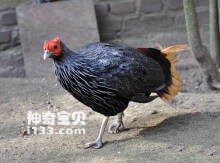
Bornean Crestless Fireback (Lophura pyronota), a single species without subspecies differentiation. It was once a subspecies of Pheasant's Pheasant, but was classified as a separate species in 2014.Bornean pheasants are often found alone or in pairs. It is most active in the early morning or eve...

Lophura inornata (Salvadori's Pheasant), usually in small groups of three to six individuals, either alone or in pairs. In winter, there are sometimes as many as 16-17 clusters. Especially in the early morning or evening the most active, poor activity at noon, night more perches in trees. Activi...

Lophura ignita is a medium pheasant measuring 70cm in length. The pheasant's pheasant mainly eats plants, fruits, and small animals. The female will lay four to eight eggs at a time, which are milky white.Due to continued habitat loss and excessive hunting, the Pheasant's pheasant has been l...
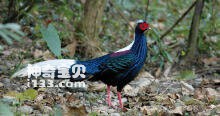
Lophura erythrophthalma, often alone or in pairs or in small groups of 3-6 individuals. In winter, there are sometimes as many as 16-17 clusters. Especially in the early morning or evening the most active, poor activity at noon, night more perches in trees. Activities often strut, act alert, run qui...

Lophura edwardsi Edwards' s Pheasant, there are 2 subspecies.Lopheus is a mysterious bird that has rarely been observed in the wild, so little has been documented about its biology and ecology, including details of its diet. Mating and nesting behaviors have not been observed in the wild, only i...

Siamese fireback (Lophura diardi) is a medium pheasant.Thai pheasants usually live alone or in small groups of three to six individuals. In winter, there are sometimes as many as 16-17 clusters. Especially in the early morning or evening the most active, poor activity at noon, night more perches in...
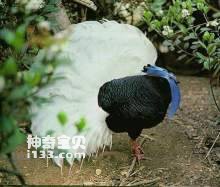
Lophura bulweri, also known as Bulwer's Pheasant, is a pheasant native to Borneo Island.A small flock of three to six individuals, usually alone or in pairs. In winter, there are sometimes as many as 16-17 clusters. Especially in the early morning or evening the most active, poor activity at noo...
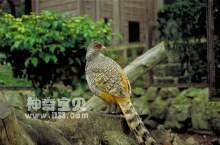
The painted Pheasant (Catreus wallichii), the foreign name Cheer Pheasant, like most pheasant birds, does not have a bright rich color.Most pheasants use their powerful beaks to dig the ground for food, including plant roots, tubers or bulbs, seeds, grubs, beetles, snails, insect larvae and worms, a...

Tragopan (Argusianus argus) is known as the Great Argus and has two subspecies.The pheasant roosts in trees at night and rummags for food on the woodland floor during the day, spending most of its time alone, except during breeding when the females gather to watch the males display in the courtship...
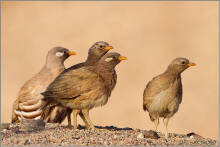
Ammoperdix heyi, also known as Sand Partridge, has four subspecies.The partridge is stout, smaller than the pheasant, fast at running and hiding, rarely flying, and soon tired of flying. Found in deserts and rocky slopes. The song of the partridge has an elegant texture and often echoes in its rocky...
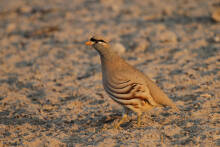
Ammoperdix griseogularis and See-see Partridge. Usually living in pairs, seeds make up 80% of the bird's diet in summer, with other foods including greens, berries and insects. Considered monogamous, females usually breed in April, laying 5-7 eggs per litter, with nests embedded or hanging from...
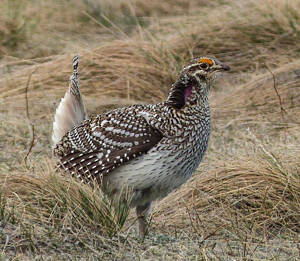
The Sharp-tailed prairie Grouse (Tympanuchus phasianellus) is known as sharp-tailed grouse and has seven subspecies.The pintail prairie grouse is a forest bird, usually hiding in the branches of the pine tree, sometimes people walk nearby, still not moving: in the underforest brush slowly, when frig...
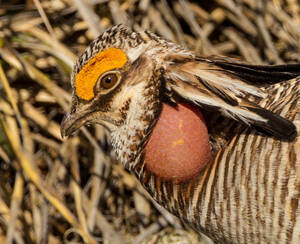
The Lesser Prairie-chicken (Tympanuchus pallidicinctus) has no subspecies.The range of the little grass fowl is up to 5 square kilometers for males, and 2.3 square kilometers for females. The fragmentation of local habitats by farming and human construction has put considerable pressure on the range...
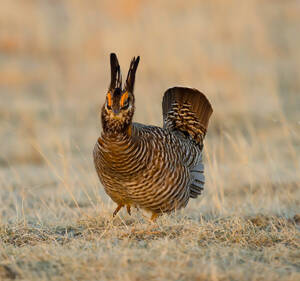
The Prairie grouse (Tympanuchus cupido), also known as Greater Prairie-chicken, has three subspecies.Prairie grouse usually live in a relatively small area of a few hundred acres to cover and meet their food and water needs. If food is in short supply, they can also fly several miles for food. It is...
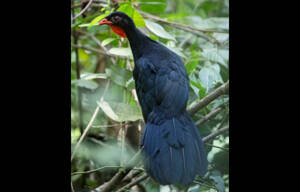
Highland Guan (Penelopina nigra), no subspecies.Crested pheasants spend a lot of time in trees, feeding on berries and fruits, and sometimes descend to the ground to catch and eat animals, including lizards and mice. They usually occur alone and in pairs or in small groups of 3-4 individuals. The ca...
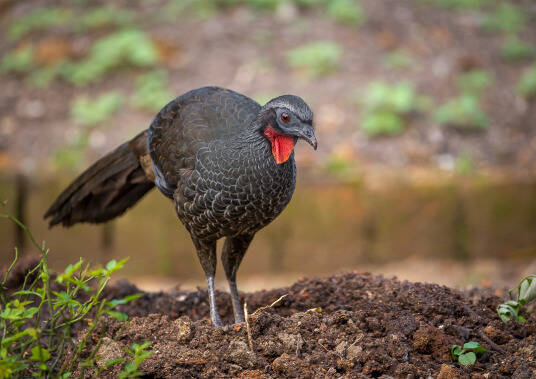
Its scientific name is Penelope superciliaris, and its foreign name is Rusty-margined Guan. Most of the time they live in pairs or in groups of 6-12. They walk on branches, looking for fruits and leaves to eat. A bird's nest is built on a tree or stump with branches and leaves. The female will l...
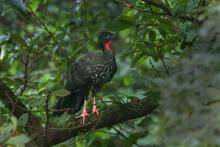
Penelope purpurascens, Crested Guan, likes to live in groups. Most of the time they live in pairs or in groups of 6-12. They walk on branches, looking for fruits and leaves to eat. A bird's nest is built on a tree or stump with branches and leaves. The female will lay two to three eggs at a time...
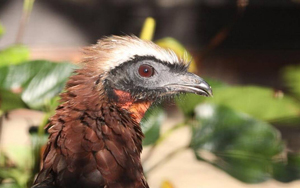
The pheasant's scientific name is Penelope pileata, and its foreign name is White-crested Guan. Most of the time they live in pairs or in groups of 6-12. They walk on branches, looking for fruits and leaves to eat. A bird's nest is built on a tree or stump with branches and leaves. The femal...
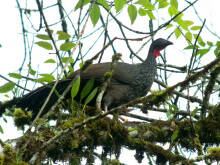
The crested pheasant's scientific name is Penelope perspicax, and its foreign name is Cauca Guan. Most of the time they live in pairs or in groups of 6-12. They walk on branches, looking for fruits and leaves to eat. A bird's nest is built on a tree or stump with branches and leaves. The fem...